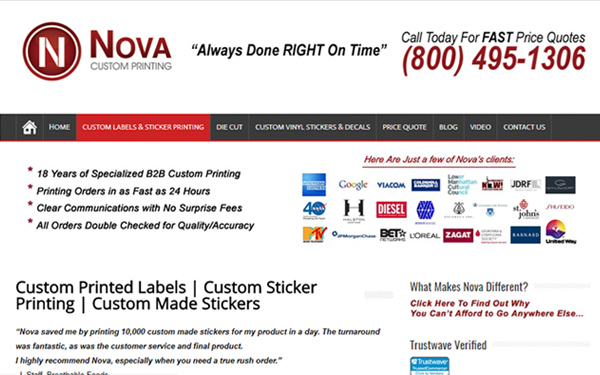Table of Contents
As designers, what can we do to create product label designs that sell?
A design may look fabulous, but if it doesn’t sell the product it’s attached to, it won’t do our clients any good. A label that sells leads to repeat business for designers. What makes a label stand out on the shelf next to other products? Here are five steps that can help designers create effective product labels that help their clients sell products:

1. Research the Competitors
Look at the client’s competitors’ labels. Which competitor’s sales are outranking the others? Is there something compelling on the label that draws a customer’s eye? Look at the color, shape, and content on the label. Take extensive notes on at least the client’s top three competitors, perhaps even more. If photos are possible, take photos. List them on an idea board or in a digital file in the order of their sales.
2. Research the Target Market
Certain colors, fonts, and designs have an innate appeal to various demographics. For example, professional women who enjoy traditional outdoor sports—like golf and equestrian sport—may prefer a label with classic fonts and colors right out of the clubhouse décor: think browns, dark greens, and reds. On the other hand, millennial men who love rock and rap, beer and basketball may prefer eye-popping designs with wild fonts and bright, high-contrast colors: think NBA logos and sports car ad colors. Before drawing out the design, create a portrait of the client’s ideal customer to help select each element of the label’s design.
3. Choose the Information the Label Will Have
Many industries require that specific information be included on the label. Food and beverage products, for instance, as well as medicines, must have a list of the ingredients in a certain order. Look at the legal requirements for the type of label the client needs. Next, order the information according to its importance. Make sure the label has at least the logo, the name, and all the information required by law. Eliminate any non-essential information that will clutter the label’s appearance. Clutter never sells. What is essential, however, is the product’s unique selling point. This is what’s called a “USP”. Make sure to convey the product’s benefits in a concise tagline (slogan) that can bring the point home in a split second. Like Nike’s “Just Do It,” a tagline should capture the attention of the target market and extol the product’s benefits in just a few words. If there’s a copywriter on the creative team for the label, enlist his or her help to create a winning slogan.
4. Choose the Size, Shape, and Material
Look at the product. A smaller product, particularly if the client wants part of the product to show through, will need a label small enough to display the wares inside. Socks labels, jars of jam, fruit, or vegetables, as well as some labels for beverages need to show off the goods to appeal to customers. Choose a shape that will both look good on the product and appeal to the target customer. As for material, look at how the product must be stored. Labels that go on refrigerated items, for instance, must adhere to the container even in a cool, moist environment. Boxes often get tossed around during shipping. A label made from tough material is a must for shipping boxes. If the client wants more of the product to show, it may be best to select a partially transparent label.
5. Design the Color, Font, and Design
Color is usually the first design element that attracts a customer’s eye. Choose a color palette that appeals to the target demographic and fits well with the product’s use. Make sure that the color scheme stands out from its competition and that it blends in well with the container and contents. If the client already has a logo and brand colors, make sure that the label’s colors reflect the brand and fit in well with existing material. Keep the palette to no more than three colors. A simple color scheme is easier on the eye, easier for customers’ minds to process, and reduces visual clutter.
When a designer keeps all these elements in mind while creating a label for his or her client, it can help catapult product sales through the roof. Clients will be overjoyed—and the designer will have a great client for life!





